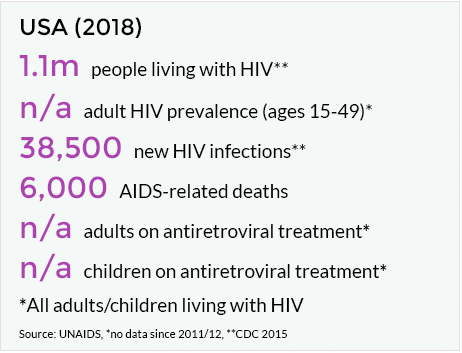HIV BASICS
Everyone between the ages of 13 and 64 should get tested for HIV at least once. If your behavior puts you at risk after you are tested, you should think about being tested again. Some people at higher risk should get tested more often.
ABOUT HIV & AIDS
HIV is a virus spread through certain body fluids that attacks the body’s immune system, specifically the CD4 cells, often called T cells. Over time, HIV can destroy so many of these cells that the body can’t fight off infections and disease. These special cells help the immune system fight off infections. Untreated, HIV reduces the number of CD4 cells (T cells) in the body.
This damage to the immune system makes it harder and harder for the body to fight off infections and some other diseases. Opportunistic infections or cancers take advantage of a very weak immune system and signal that the person has AIDS.
What is HIV?
HIV is the human immunodeficiency virus that causes AIDS. A member of a group of viruses called retroviruses, HIV infects human cells and uses the energy and nutrients provided by those cells to grow and reproduce. 1.1million people in the U.S. are infected with HIV.
What is AIDS?
AIDS (acquired immunodeficiency syndrome) is a disease in which the body’s immune system breaks down and is unable to fight off certain infections, known as “opportunistic infections,” and other illnesses that take advantage of a weakened immune system.
How HIV is Transmitted
HIV is a virus spread through certain body fluids that attacks the body’s immune system, specifically the CD4 cells, often called T cells. Over time, HIV can destroy so many of these cells that the body can’t fight off infections and disease. These special cells help the immune system fight off infections. Untreated, HIV reduces the number of CD4 cells (T cells) in the body.
This damage to the immune system makes it harder and harder for the body to fight off infections and some other diseases. Opportunistic infections or cancers take advantage of a very weak immune system and signal that the person has AIDS.
Know your Status - Getting Tested
Everyone between the ages of 13 and 64 should get tested for HIV at least once. If your behavior puts you at risk after you are tested, you should think about being tested again. Some people at higher risk should get tested more often.
If your last HIV test result was negative, you should get an HIV test if you answer “yes” to any of the questions below about your risk since that test:
- Are you a man who has had sex with another man?
- Have you had sex—anal or vaginal—with an HIV-positive partner?
- Have you had more than one sex partner?
- Have you injected drugs and shared needles or works (for example, water or cotton) with others?
- Have you exchanged sex for drugs or money?
- Have you been diagnosed with, or sought treatment for, another sexually transmitted disease?
- Have you been diagnosed with or treated for hepatitis or tuberculosis (TB)?
- Have you had sex with someone who could answer “yes” to any of the above questions or someone whose sexual history you don’t know?
- Sexually active gay and bisexual men may benefit from more frequent testing (for example, every 3 to 6 months).
How HIV is Transmitted
You can get or transmit HIV only through specific activities. Most commonly, people get or transmit HIV through sexual behaviors and needle or syringe use.
Only certain body fluids—blood, semen, pre-seminal fluid, rectal fluids, vaginal fluids, and breast milk—from a person who has HIV can transmit HIV. These fluids must come in contact with a mucous membrane or damaged tissue or be directly injected into the bloodstream (from a needle or syringe) for transmission to occur. Mucous membranes are found inside the rectum, vagina, penis, and mouth.
In the United States, HIV is spread mainly by:
Having anal or vaginal sex with someone who has HIV without using a condom or taking medicines to prevent or treat HIV.
For the HIV-negative partner, receptive anal sex (bottoming) is the highest-risk sexual behavior, but you can also get HIV from insertive anal sex (topping).
Either partner can get HIV through vaginal sex, though it is less risky for getting HIV than receptive anal sex.
Sharing needles or syringes, rinse water, or other equipment (works) used to prepare drugs for injection with someone who has HIV. HIV can live in a used needle for up to 42 days depending on temperature and other factors.
Your Options & Treatments
HIV treatment involves taking medicines that slow the progression of the virus in your body. HIV is a type of virus called a retrovirus, and the drugs used to treat it are called antiretrovirals (ARV). These drugs are always given in combination with other ARVs; this combination therapy is called antiretroviral therapy (ART). Many ART drugs have been used since the mid-1990s and are the reason why the annual number of deaths related to AIDS has dropped over the past two decades.
Although a cure for HIV does not yet exist, ART can keep you healthy for many years, and greatly reduces your chance of transmitting HIV to your partner(s) if taken consistently and correctly. ART reduces the amount of virus (or viral load) in your blood and body fluids. ART is recommended for all people living with HIV, regardless of how long they’ve had the virus or how healthy they are.
HIV treatment is most likely to be successful when you know what to expect and are committed to taking your medicines exactly as prescribed. Working with your health care provider to develop a treatment plan will help you learn more about HIV, manage it effectively, and make decisions that help you live a longer, healthier life. HIV treatment will also greatly reduce your chance of transmitting HIV to your partner(s) if taken consistently and correctly.


